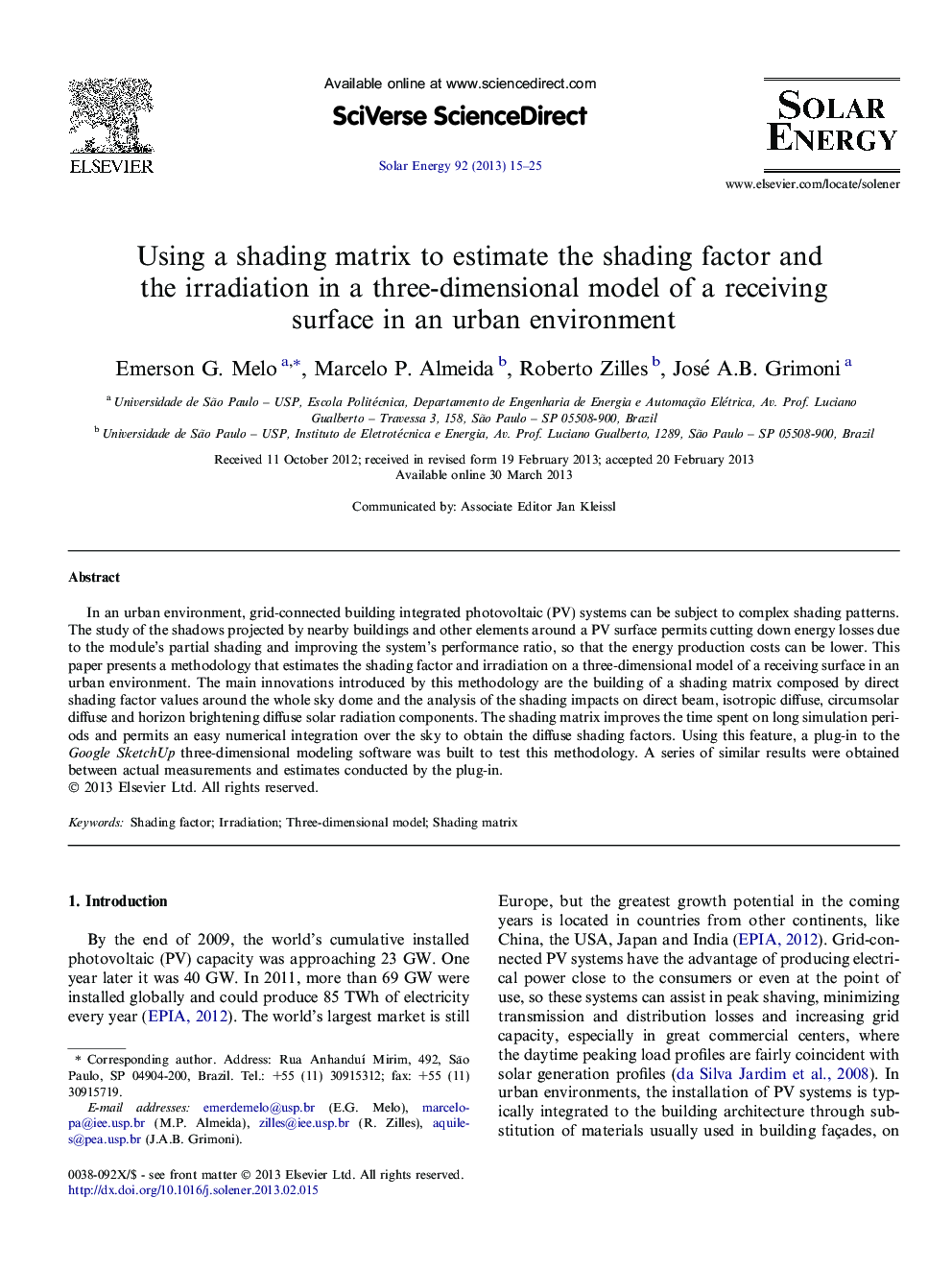| Article ID | Journal | Published Year | Pages | File Type |
|---|---|---|---|---|
| 1550534 | Solar Energy | 2013 | 11 Pages |
In an urban environment, grid-connected building integrated photovoltaic (PV) systems can be subject to complex shading patterns. The study of the shadows projected by nearby buildings and other elements around a PV surface permits cutting down energy losses due to the module’s partial shading and improving the system’s performance ratio, so that the energy production costs can be lower. This paper presents a methodology that estimates the shading factor and irradiation on a three-dimensional model of a receiving surface in an urban environment. The main innovations introduced by this methodology are the building of a shading matrix composed by direct shading factor values around the whole sky dome and the analysis of the shading impacts on direct beam, isotropic diffuse, circumsolar diffuse and horizon brightening diffuse solar radiation components. The shading matrix improves the time spent on long simulation periods and permits an easy numerical integration over the sky to obtain the diffuse shading factors. Using this feature, a plug-in to the Google SketchUp three-dimensional modeling software was built to test this methodology. A series of similar results were obtained between actual measurements and estimates conducted by the plug-in.
► The proposed methodology permits to estimate the irradiation and the shading factor. ► The shading matrix minimizes the time spent in monthly and yearly simulations. ► The influence of shadow projections is analyzed in the three sky diffuse components. ► A Google SketchUp plug-in is developed making use of the proposed methodology. ► In an extreme shading condition, the measured and simulated value difference is 12.7%.
